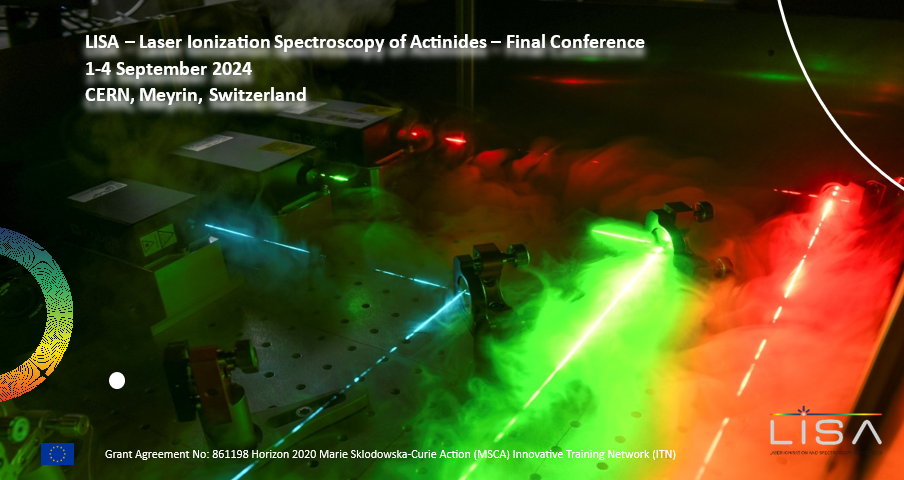Speaker
Description
Experimental studies tailored to unveil fundamental properties of the heaviest actinide elements have recently gained increasing interest and yet the available information remains sparse [1]. Nuclides in this region of the nuclear chart are stabilized by shell effects that retard spontaneous fission and they feature properties distinctly different from those of lighter nuclei. In addition, the atomic structure of these heavy elements features an enhanced impact of relativistic effects affecting their chemical properties compared to the lighter homologes [2]. However, predictions of such atomic and nuclear properties by state-of-the-art theoretical models are challenging and experimental studies are hampered by production capabilities and short half-lives of these nuclides.
Laser spectroscopy has proven itself to be a powerful tool to investigate such characteristics of exotic nuclei widely spread over the nuclear chart [2,3]. Ground-state properties such as the nuclear mean-square charge radius, the nuclear spin and moments, can be extracted by probing known transitions between atomic energy levels. In this context, the development of the RADRIS method, and the first experimental identification of atomic states in nobelium (Z=102), constitute a gateway to laser [4].
Methodological advancements towards new production schemes and an increased sensitivity of the method recently allowed for first on-line laser spectroscopy investigations of fermium (Fm, Z = 100) isotopes. By combining on-line and off-line laser spectroscopy techniques and various production methods, isotope shifts in an atomic transition were determined for eight isotopes ranging from the accelerator-produced 245Fm to the reactor-bred 257Fm. The investigated chain spanning over both sides of the weak deformed shell gap at N = 152 [5] allowed probing its imprint on changes in the mean-square charge radius [6]. The increased sensitivity of this setup additionally yields a decisive benefit for the search of atomic levels in the heaviest actinide element, lawrencium (Z=103) [7], with a tenfold lower production rate as in the nobelium isotone.
New experimental results and methodological advances achieved within the LISA framework will be discussed in view of further perspectives for laser spectroscopy of the heaviest elements. The presented experimental observations give insight into the nuclear structure of the heavy actinides supporting new developments in theoretical models which will eventually improve their predictive power in a key region.
[1] O. Smits et al., Nat Rev Phys 6, 86-98 (2024).
[2] M. Block et al., Prog Part Nucl Phys 116, 103834 (2021).
[3] X. Yang et al., Prog Part Nucl Phys 104005 (2023).
[4] M. Laatiaoui et al., Nature 538, 495–498 (2016).
[5] L. Buskirk et al., Phys Rev C 109, 044311 (2024).
[6] J. Warbinek et al., submitted (2024).
[7] J. Warbinek et al., Atoms 10, 41 (2022).
